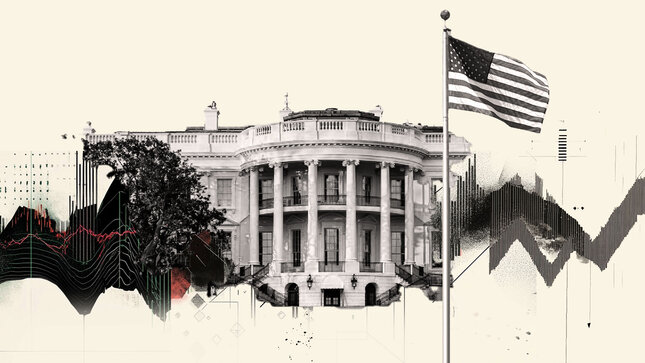
The US Dollar (USD) is the official currency of the United States of America and serves as the ‘de facto’ currency in many other countries, where it circulates alongside local notes. It is the most heavily traded currency in the world, accounting for over 88% of all global foreign exchange turnover. According to data from 2022, this amounts to an average of $6.6 trillion in transactions per day.
Following the Second World War, the USD replaced the British Pound as the world’s primary reserve currency. For most of its history, the US Dollar was backed by Gold. However, this changed with the Bretton Woods Agreement in 1971, which marked the end of the Gold Standard.
The most significant factor impacting the value of the US Dollar is monetary policy, which is managed by the Federal Reserve (the Fed). The Fed has two primary mandates: to achieve price stability (control inflation) and to foster full employment. Its main tool for influencing the economy is adjusting interest rates.
When prices are rising too rapidly and inflation exceeds the Fed’s 2% target, the Fed increases interest rates, which tends to strengthen the USD. Conversely, if inflation falls below 2% or the unemployment rate becomes too high, the Fed may lower interest rates, leading to a weaker Greenback.
In extreme situations, the Federal Reserve can also engage in printing more Dollars and implementing quantitative easing (QE). QE is a non-standard monetary policy where the Fed significantly increases the flow of credit within the financial system. It is used when credit has dried up, often because banks are reluctant to lend to each other due to fears of counterparty default.
QE is typically employed as a last resort when lowering interest rates alone is insufficient. During the 2008 Great Financial Crisis, QE became the Fed’s tool of choice to combat the credit crunch. This involves the Fed printing more Dollars and purchasing US government bonds—mainly from financial institutions.
Generally, QE leads to a weaker US Dollar. On the other hand, quantitative tightening (QT) is the reverse process—where the Fed stops buying bonds from financial institutions and does not reinvest the principal from maturing bonds into new purchases. QT usually has a positive effect on the US Dollar’s value.
https://bitcoinethereumnews.com/finance/impact-of-government-shutdown-on-economy-is-worsening/



